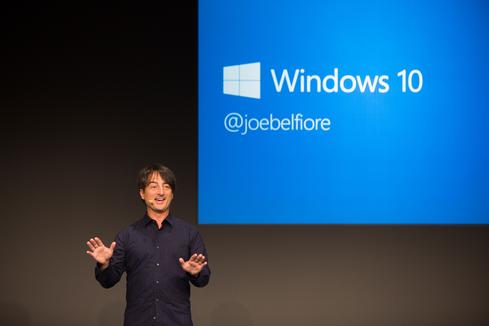Windows 10: Microsoft Attempts A SaaS ModelWindows 10: Microsoft Attempts A SaaS Model
With Windows 10, Microsoft will attempt to update its operating system with a cloud sensibility. Can it be done?


Windows 10: 8 Things Microsoft Got Right
Windows 10: 8 Things Microsoft Got Right (Click image for larger view and slideshow.)
At the Ignite conference earlier this year, Microsoft's Jerry Nixon called Windows 10 the last operating system that the software giant will ever produce.
That does not mean Windows is being orphaned. What it means is that Microsoft has changed its view about what constitutes an OS.
Microsoft has historically sold Windows as a license, and generated their revenue from that. That's about to change this Wednesday, July 29, when Windows 10 is officially released during a worldwide marketing and media campaign.
Here's what's coming:
Microsoft CEO Satya Nadella reportedly told financial analysts at the Build conference in the spring, "We are moving from a product that is perpetual to one that is always up to date. In the past we've always had revenue per license. Going forward we'll have revenue per device, and we'll have revenue per device gross margin."
The realization of what has changed over the years -- cloud and mobility -- has finally set in deeply at Microsoft.
On his website, Phil Sorgen, corporate vice president of the company's Worldwide Partner Group, notes without irony that, "In this mobile-first, cloud-first world, those businesses that embrace technology to reinvent themselves and their industries will thrive, and those who embrace status quo risk extinction."
Just so, Microsoft -- and you have been the status quo.
Though slides like "Windows as a Service" or WaaS have shown up at some Microsoft presentations, the company is not emphasizing the new OS model to the general public just yet.
They probably do not want to overly confuse their installed base of OS buyers who have become used to the previous OS model of "pay once, patch, and then upgrade" over the years.
The installed base might then realize that they will probably have to pay for incremental feature changes, even if they get the base OS for free.
WaaS complements the new Microsoft emphasis on cloud service.
[Will Windows 10 change IoT? Yes it will.]
The tools that used to be licensed applications for Microsoft are all migrating to cloud-based services. It makes sense that going forward in a cloud-first, mobile-first world, Microsoft's way to interface with these services on a desktop or device would be cloud-based as well.
A WaaS approach would also avoid the major problem that exists in Android development -- system fragmentation.
Android developers cannot assume (as they generally can in iOS) that users will have a reasonably recent OS present.
WaaS can ensure any major changes in system code would be pushed out to users, much as Apple does with Mac OS X. These changes could then enable the functionality of any other application changes that may occur in the future.
In short, Microsoft is developing an ecosystem for its products with Windows at the hub. As the ecosystem evolves, Windows will have to evolve as well. The only practical way to ensure that evolution is possible is to make Windows live in the cloud.
About the Author
You May Also Like






